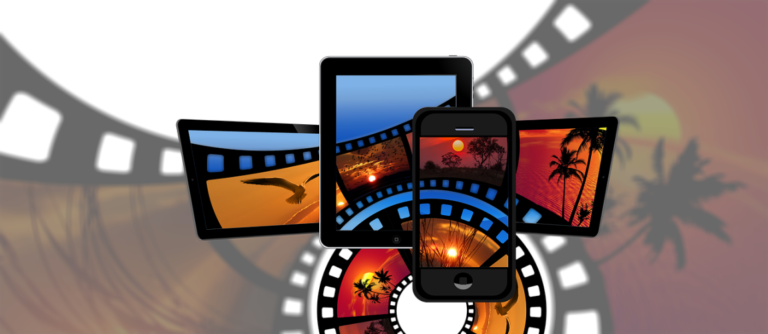Structuring Your Narrative
Seth Godwynn
From a voyage of discovery to head-hopping omniscience
Once you have in mind the broad strokes of your story—your characters, situations, resolutions, all the essential things that have to have happen—it’s time to take a firm stance on how you’re going to approach presenting it. That is to say, you need to decide on a narrative structure.

Assuming the basis of your story is a coherent sequence of events featuring at least one main protagonist, there are in principle two approaches you can take:
Voyage of discovery

Here, we follow our protagonist’s adventures exclusively. At the beginning of the story, a time when whatever happens to set events in motion hasn’t happened yet, the protagonist is none the wiser and nor are we. As he or she discovers or observes things, we share in that experience.
This kind of narrative is inherently engaging, as the reader feels they are an active participant in an adventure that they embark upon with a familiar close companion.
On the other hand, it can occasionally be long winded and drawn out. If you had, for example, a situation where people are increasingly going missing, and this is what sets events in motion, you will need to consider how the protagonist is going to find out about all the disappearances before the reader gets too bored. It will often be necessary to rethink how situations will play out and adjust them to better fit the narrative flow. To practice getting into that mindset, try taking a popular movie and drafting a broad strokes outline of how you would novelise it as a single protagonist voyage of discovery. What adaptations would you need to make to tell the whole story from the perspective of one character? You can even try switching up the characters—how would you tell it from the antagonist’s perspective?
For more complex stories involving a larger number of players, it is not uncommon to alternate sections or chapters between multiple equally weighted protagonists. Another common variant is in having the narrator an invisible member of a party of protagonists, which allows the reader to see events and hear conversations among all the participants, without limiting it to one in particular. As long as the characters are of common purpose, this approach can be substantially identical to a regular voyage of discovery.
Cinematic Digest

This approach emphasises show over tell, taking its cues from the visual language of cinema. In order to provide a more concise story, events outside of the protagonist’s sphere of vision and knowledge are presented to the reader directly. By freeing the reader of constraint, the story-telling becomes more economical, but also more impersonal as the reader is merely an observer and always several steps ahead of the characters. Also, if written without sufficient care or world building, constantly teleporting the reader to new locations and situations can prove disorienting.
Both approaches have their distinct advantages and disadvantages, and if done well, the reader is unlikely to notice the story telling as being one way or the other. That being said, if my extensive bookshelf of reputably published novels is anything to go by, the voyage of discovery approach is by far the most common. The cinematic digest approach I’ve found is mostly used with novelisations of movies (or even graphic novels), as well as the loftier sort of book you’re forced to study at high school, which subsequently puts you off reading completely for a decade. The one type is very character focussed, whereas the other places a little more distance between the reader and the characters, instead putting greater significance on the events themselves. It is possible to combine the two, but difficult to get right, as it can easily come off feeling disjointed.
Points of View

It’s also necessary to determine who exactly is telling the story, in the broadest possible terms. The most common choices are first-person and any of several perspectives of third-person points of view. These all do different things and the key to using them correctly is in understanding their strengths and weaknesses. You shouldn’t be thinking in terms of writing a first or third person story, you should be thinking of the story you want to tell and then deciding which of your options fits it best.
First Person

Put simply, the narrator and the protagonist are one and the same. This is one of the harder styles to write, because every word of narrative must be written to match the speaking style of the character. It tends to make for a more enjoyable read though, as there is a much greater intimacy to it. It also has the advantage that the narrator is far less restrained than with other points of view, and can get away with speaking what’s on his mind, making biased observations, offering opinion as fact, and using semi-inappropriate colloquialisms with impunity.
This does not mean the rules of grammar do not apply though—get that out of your head right away! Even if your protagonist does not speak good English, the grammar needs to still be internally consistent, and you will have to keep that up for the entire book.
“The Moon is a Harsh Mistress” by Robert A. Heinlein is narrated by a Russian protagonist in a slightly grinding broken English. While normally a fan of his work, I found this quickly became excruciatingly headache-inducing, and gave up after a few chapters. This was a huge pity because the story seemed quite compelling…
Third Person

Here, the narrator is a disembodied presence that (generally) does not directly interact with characters or events. There are different perspectives on this point of view that determine the nature of the presence, and place restrictions on its movements, as follows:
• Free vs Limited
A free narrator knows from the outset everything that’s happened, is happening, or is going to happen to everybody, everywhere in the whole world your story takes place. It is the narrator’s job to determine what information the readers should know, and when, in order to tell the best story.
A limited narrator only knows and sees what the protagonist would reasonably know and see, so is only able to speak of things in the protagonist’s immediate surroundings. In principle, this is very similar to first-person, only the narrator is not the protagonist. The narrator is something else.
• Omniscient vs Objective
An omniscient narrator knows what the characters are thinking and feeling and can talk freely of this. If the omniscient narrator is also limited, then he only knows the protagonist’s thoughts, and would need to infer the thoughts of others through their behaviour and context.
An objective narrator is what you get when your ability to mind-read excludes everybody but the protagonist, and then you exclude the protagonist too.
Ironically, first-person point of view also allows you a degree of free omniscience, not just of your protagonist (who is the narrator) but also the people he or she knows. It’s one of the benefits of being unreliable, that you can express opinions as facts, and that includes interpretations of what’s going on in other characters’ heads.
• Passive vs Active
A passive narrator merely observes and reports, whereas an active narrator can involve himself in events with god-like powers. The latter is sometimes used for comedic purposes—the protagonist complains that his situation is like a badly written novel, and then proceeds to punch himself in the face for no reason. The active narrator has this power, and it is best avoided for exactly that reason.
For voyages of discovery works, I normally find that first-person, and third-person limited (either omniscient or objective) work best, regardless of whether you have single or multiple protagonists.
For cinematic digest, you’re really limited to a free narrator, and the choice to make him objective or omniscient depends on the story you want to tell. Omniscience will help if you need the audience to connect with the characters, and objective will likely be better if your focus is more on macro-level events.
Head-Hopping

Limited omniscience is often presented very differently to free omniscience, in that the internal thoughts of the protagonist can be more direct and intimate. When you know the thoughts of all the characters, it becomes necessary not to bias one character over another, which compels some degree of respectful distance from all of them.
If done carelessly, it’s easy to find yourself head-hopping, a generally frowned upon writing style where you give the impression (through intimacy and apparent exclusiveness) that the narrator’s omniscience is limited to one character… but then moments later starts revealing the thoughts and feelings of others to a similar degree. This can feel very disorientating for the reader, though there are ways to avoid it.
If you need to reveal the thoughts of all of the characters, but only one at a time, the safest way is to use the limited omniscience approach and add a section break any time you need to change the character.
If you need to reveal the thoughts of all of the characters at the same time, establish that you will be doing this no later than the second paragraph, and be careful not to bias it in favour of or against any specific characters. Part of what disorients the audience is that they could read several pages into a chapter understanding what they’re reading to be a certain way, only to find that it hasn’t been that at all. It’s good to subvert the reader’s expectations from time to time, but this is not a good way to do it, as they will more than likely subvert yours by closing the book and never reading any of your work again. As a rule of thumb, stick to the thoughts and experiences of one character in each given scene. Any more is very likely going to be unsettling to the reader.
Conclusion

Whether you choose to tell your story as a voyage of discovery or a cinematic digest, using the first or third person, with or without god-like mind-reading powers, is very much going to depend on the story you want to tell, as well as your own strengths and weaknesses as an author. You may also disagree on whether head-hopping is something to avoid, or something to embrace, which makes it all the more vital that you learn enough about it to make an informed choice, and learn how to do it right.
At the end of the day, it’s the people who are going to read your book that you need to be writing for, and if they feel that you’ve made poor writing decisions, they are going to lose interest in your work. That’s why it’s important to learn to use the whole range of narrative structures effectively so you always have the right tool for the job at your disposal.
Many thanks for reading this article. We hope it was interesting, informative and entertaining. Follow us on social media or share our content on your own pages. It helps us grow so we can create more free content to help you.
